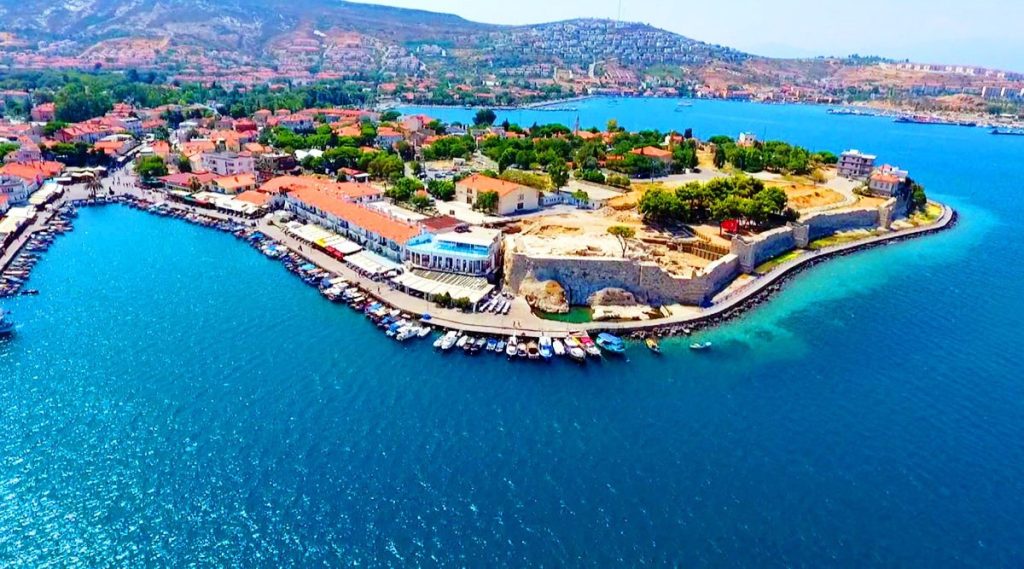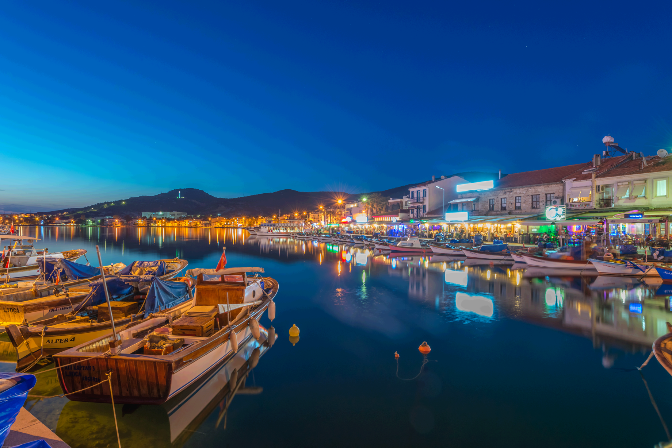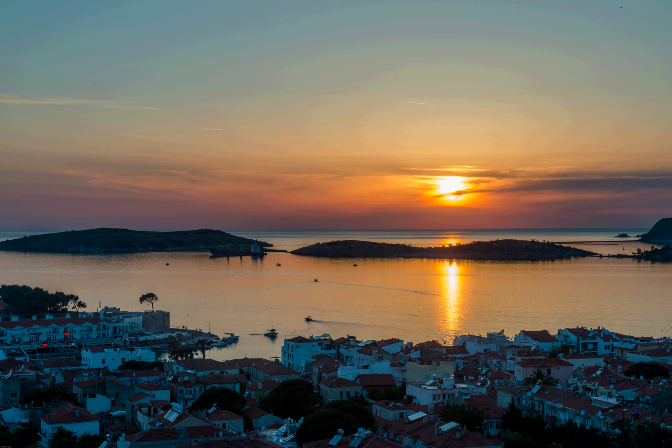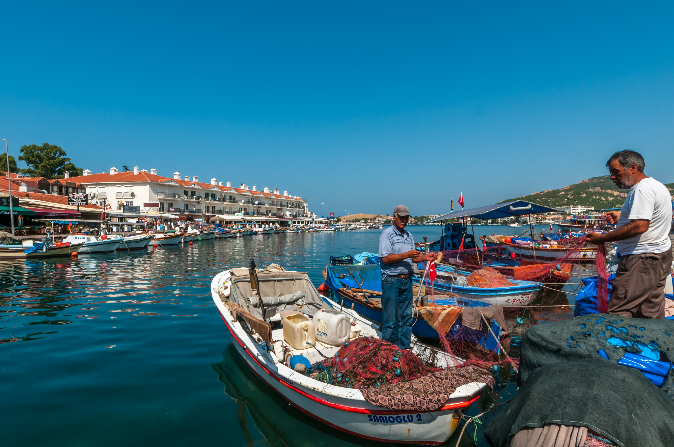The Aegean’s Hidden Gem on the Coast of İzmir
Nestled on the scenic coastline of İzmir, Foça is a stunning blend of ancient heritage, natural beauty, and culinary richness. Known for its crystal-clear waters, charming harbor, and deep historical roots, Foça is one of Turkey’s most captivating coastal destinations.
Foça’s history dates back to the ancient Ionian period, when it was known as Phokaia. The town takes its name from the Mediterranean monk seals (phoca) that once flourished around its rocky shores and islands.
Founded by the seafaring Phokaians, who were renowned for their shipbuilding and exploration, the town became a prominent center in the Mediterranean and Black Sea through its colonies.
The town later became part of Turkish dominion, eventually joining the Ottoman Empire under Fatih Sultan Mehmet in 1455. Today, the town still echoes its rich cultural legacy while offering all the charm of a modern Aegean town.

İzmir, Foça
Climate & Cuisine
Foça enjoys a classic Mediterranean climate; hot, dry summers and mild, rainy winters. With an average annual temperature of around 18°C, the best time to visit is between April and November, when the weather is perfect for seaside strolls, swimming, and sightseeing.
Foça’s cuisine is a delicious blend of Aegean and Mediterranean flavors, with a strong focus on fresh herbs, olive oil, and seafood. Summer is the best time to enjoy local fish restaurants by the coast, offering a variety of freshly caught delights such as:
- Barbun (Red Mullet)
- Tekir (Striped Mullet)
- Kefal (Mullet)
- Mezgit (Whiting)
- Kolyoz (Atlantic Mackerel)
- Orkinos (Tuna)
- Sinarit (Dentex)
- Çinekop (Young Bluefish)
- Karagöz (Sea Bream)
Don’t miss regional specialties like:
- Yoğurtlu Kupa (Fish with Yogurt)
- Octopus Salad
- Sinarit in Salt Crust
- Foça-style Fish Stew

Foça nights
Top Attractions that You Can’t Miss
Foça offers a mix of ancient ruins, mythological landmarks, and charming coastal views:
- Athena Temple: A 6th-century BC Ionian sanctuary dedicated to Athena, the protector of Phokaia.
- Herodotus and Archaic Walls: Spanning 5 kilometers, these defensive walls are attributed to the Archaic period and were mentioned by Herodotus himself.
- Şeytan Hamamı (Devil’s Bath): A mysterious rock tomb dating back to the 4th century BC.
- Persian Rock Tomb: A well-preserved 4th-century BC tomb reflecting Persian architectural influence.
- Kibele Open Air Temple: Originally constructed in the 6th century BC, later restored by Roman, Chauhan, and Ottoman civilizations.
- Historic Windmills: Located on hilltops, these charming windmills offer panoramic views and rustic ambiance.
- Siren Rocks: Said to be linked to Homer’s Odyssey, these mythical rocks continue to fascinate visitors.
- Foça Islands:An untouched archipelago off the coast, perfect for boat tours and wildlife watching.

Sunset in Foça
Events & Festivals in Foça
Foça isn’t just about history and beaches; it’s also a cultural hotspot:
- Foça Environment Short Film Festival (July): Celebrating environmental awareness through cinema.
- Foça Festival (September): A vibrant showcase of local products, crafts, and cuisine.
How to Get There
From İzmir: Take the route through Karşıyaka → Çiğli → Menemen → Buruncuk.
From Istanbul or Çanakkale: Exit the Istanbul-Çanakkale highway at the 35th km, then drive 25 km to Foça.
From Ankara: Use the Ankara–Eskişehir highway, then follow directions to İzmir and proceed to Foça.
Whether you’re a history lover, a beachgoer, or a food enthusiast, Foça offers something for everyone. With its ancient ruins, azure waters, rich flavors, and serene pace of life, it’s one of the best-kept secrets on Turkey’s Aegean coast.

